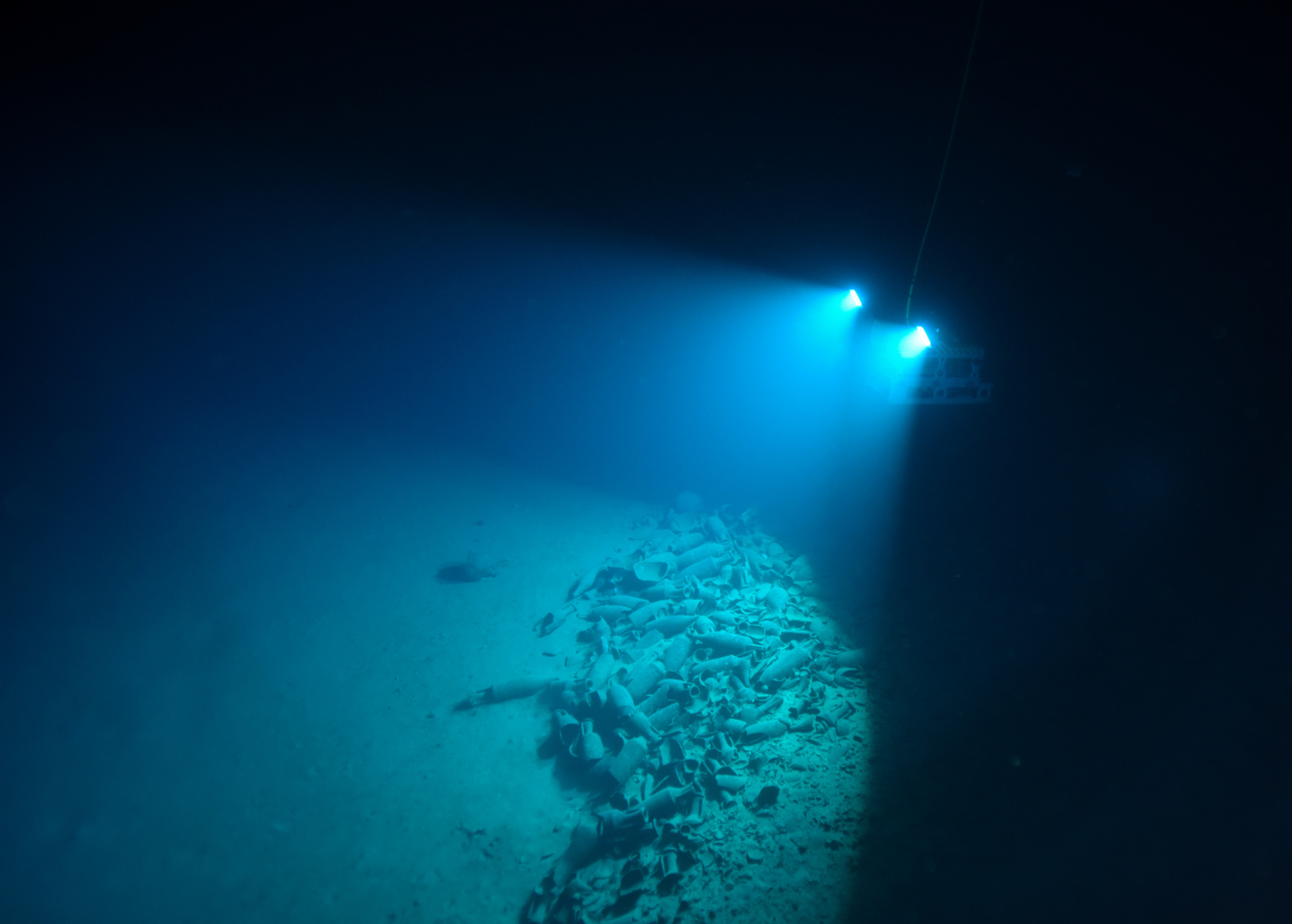
- Home
- A great scientific adventure
- Deep sea archaeology
- Aléria 1
Discovered in 2012 more than 300 metres below the sea, the Aléria 1 wreck has since been the subject of several studies which have generated a wealth of information about the cargo.
A stamp to date the wreck
The cargo associated with the wreck comprised thousands of oil lamps and pieces of crockery, as well as mortars from the region around Rome and amphorae from all over the Mediterranean. The letters LMVNPHILE stamped on an oil lamp recovered in 2013 were a significant chronological reference. They indicated that the lamp was made in Rome by Lucius Munatius Phile between AD 90 and 130. This eclectic cargo illustrates the role the port of Rome played in the redistribution of goods. The richness and importance of this wreck are ample justification for the studies carried out on the site under the direction of Franca Cibecchini (DRASSM).
Getting the artefacts to talk
Photogrammetry carried out in 2015 revealed some of Aléria 1’s secrets. The wreck was modest in size, measuring 17 metres in length and 6 or 7 metres in the beam. The amphorae were stowed methodically at one end of the ship, and several rows of lamps were still neatly stacked in the centre of the hold despite fishing trawlers churning up the sea floor in the area. Most of the cooking pots were housed at the other end of the vessel.
The ceramics provided precious information on the maritime route taken by the ship and also on the type of trade she was involved in. The ship foundered as she made her way to what would have been her first stop at the town of Aleria in Corsica. From there, she would have probably set out for Gaul, in all likelihood the ports of Arles and Narbonne which enjoyed good communications to inland markets.


